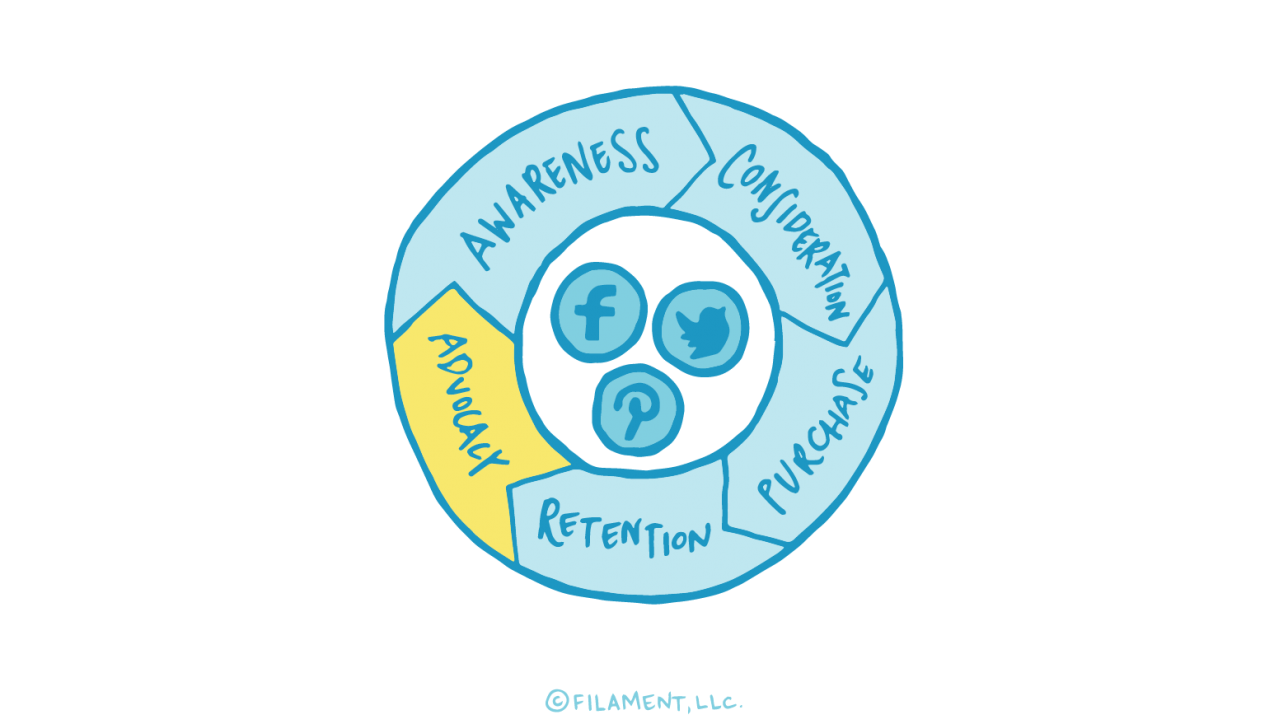Integrating lifecycle marketing and social strategy isn’t necessarily as hard as it seems, but it definitely isn’t easy either.
By nature, lifecycle marketing follows customers from the beginning stages of brand awareness and walks hand-in-hand with them throughout the course of a long and ideally happy relationship.
Effective lifecycle marketing helps people make purchasing decisions. It helps them feel informed and connected, and it keeps them interested in a brand for years to come.
The stages of customers’ lifecycles – Awareness, Consideration, Purchase, Retention, and Advocacy – all make sense. They might happen at different rates as some people make decisions and purchases more quickly than others, but they all happen. And, to some extent, we know how to communicate with our customers throughout each of the stages.
Social media, however, tends move a lot faster and in many more directions. Social media marches to the beat of its own drums. There are more moving parts to social media because it encompasses multiple channels and a variety of different frequencies, and they all happen at different times and in different ways – when and if they happen.
Facebook and Twitter, for example, are two very different channels. The likelihood that many of your customers tune into both is high, but the reality is that they typically treat and use each channel differently. They also look for different information from different channels.
What that means for brands is that that they can’t just push the same information out on each of their channels. While that’s not necessarily good news for those who like to broadcast scheduled posts, it does offer more opportunities to tune into different customers at different stages.
Social media allows us to continuously attract new customers, so we need to consistently provide “Awareness stage messaging” for those who may just have tuned-in to our brand. Fortunately, continually marketing the basics of our brand also helps us connect with customers who are further along in their lifecycle because it reaffirms why they like it in the first place.
And wouldn’t it be nice if the communications we have with those in the Advocacy stages also helped us connect with those who are considering purchases? Fortunately, they do! When prospective customers see how pleased current customers are, so much marketing is done for us… there’s little more that needs to be said.
As marketers, integrating lifecycle marketing into our social media strategies is a bit like putting together a complex puzzle. Rather than just sticking pieces together here and there in hopes that they fit, however, we’re better off listening to our social followers and responding to their needs.
While we know we’re aware of the behind-the-scenes seasonality of our messaging and promotions, we also need to hear what our customers are saying when they say it. More importantly, we need to be able to respond to them in real time. That is what keeps customers moving forward within the stages of their lifecycle – not just what the seasonal calendar or our marketing calendars say.
If you’d like help putting together the pieces of your social media puzzle, let us know. We’re glad to help!


